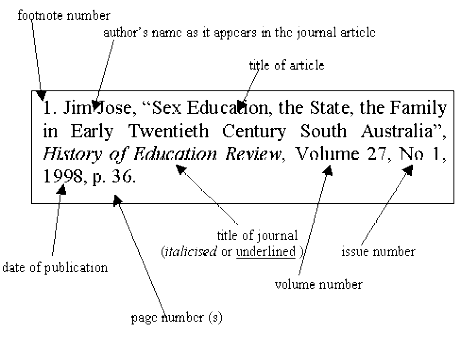
See the All Examples page for examples of in-text and reference list entries for specific resources such as articles, books and web pages.

Generally, superscript numbers should follow punctuation. New Encyclopaedia Britannica, 15th ed., s.v. In this example, the footnote is placed after the comma in the first clause to demonstrate that the source does not indicate the effort to perform the studies would be worth it. stands for sub verso, 'under the word'):Ħ. When referring to a well-known alphabetically arranged work such as an encyclopaedia, cite the title, edition if not the first, then the letters s.v followed by the term or phrase consulted ( s.v. These entries are not listed in the bibliography. Marian Wilkinson, "Life After the Lodge," The Weekend Australian, July 30-31, 1994, Focus section.Ī citation to a scriptural work does not include page numbers and is usually confined to a text reference in brackets:ĥ. The name of the section should be included, if given:Ĥ. On the References tab, select Insert Footnote or Insert Endnote. Click where you want to reference to the footnote or endnote. A number or symbol on the footnote or endnote matches up with a reference mark in the document. References to items in newspapers must include the date, month (often abbreviated) and year. Footnotes appear at the bottom of the page and endnotes come at the end of the document.

Oliver, "Lawson and Furphy," in The Literature of Australia, ed. or and others.Ĭhapter titles are enclosed in quotation marks and ed.

2 (February 2017): 93-101.įor works having more than three authors, a note citation should give the name of the first-listed author followed by et al. Montoya, and François Peyron, "Lifelong Persistence of Toxoplasma Cysts: A Questionable Dogma?," Trends in Parasitology 33, no. Merritt, "Variant Specific Epitopes of Giardia Lamblia", Molecular and Biochemical Parasitology 42, no. Where a work has two or three authors, their names are separated by and:ġ.


 0 kommentar(er)
0 kommentar(er)
